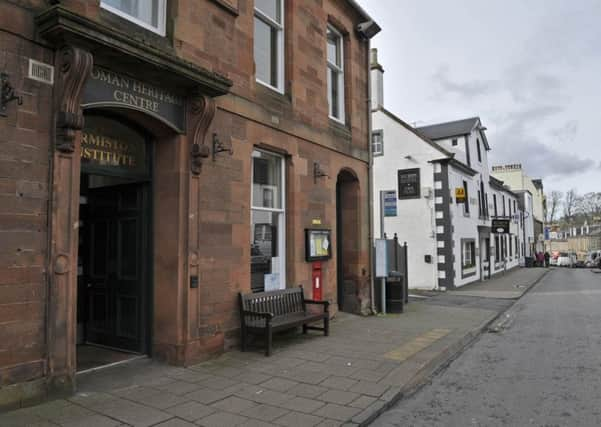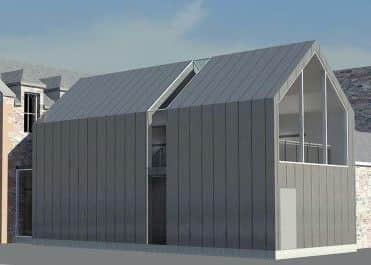Plans go in for £1.9m revamp of Melrose museum


An attempt to attract funding for a major revamp at Melrose’s Trimontium Museum of Roman relics failed to win approval from the Heritage Lottery Fund in 2016.
However, those proposals were revived with Scottish Borders Council’s support in 2017, and National Lottery money was secured for a development grant to take the project forward.
Advertisement
Hide AdAdvertisement
Hide Ad

The trust that runs the centre is now preparing a bid for further Lotto cash in March, and in the meanwhile, its maintaining the momentum of the project by submitting a planning application to the council.
If it goes ahead, the extension will raise the national profile of the museum, housed within Melrose’s Ormiston Institute in the town’s Market Square, and would be expected to increase visitor numbers from its current 3,000 a year to 12,000.
The aim also is that the work will act as a catalyst to boost tourism numbers at other visitor attractions across the Borders.
The Trimontium Museum, opened 25 years ago, is the only one in Scotland dedicated to promoting the history of the Roman frontier but is in need of an upgrade to boost its appeal as a tourist attraction.
Advertisement
Hide AdAdvertisement
Hide AdA design report accompanying the Trimontium Trust’s planning application says: “A museum refurbishment and extension with up-to-date interpretive methods and display technology will only strengthen and supplement an already-great body of work and artefacts.
“The principal aim of the project is to provide accommodation which will improve the quality and reach of the museum, resulting in a raised national profile, increased enjoyment and appreciation of visitors and increase the museum’s attractiveness to partners, volunteers, new board members and future funders.
“The redeveloped museum will further increase footfall at what is already a highly regarded tourist destination.
“The new facility will also act as a signpost for similar heritage sites across the Borders, encouraging visitors to explore and visit other locations.
Advertisement
Hide AdAdvertisement
Hide Ad“It is anticipated that footfall will increase from 3,000 to approximately 12,000 people per annum.
“Since its original installation, the exhibitions have been expanded with an array of text, images, physical pieces and children’s drawings, resulting in a surplus of information that can confuse the onlooker, thus being detrimental to the museum’s ethos.
“Although the content cannot be questioned, it is clear that there is insufficient space in what is already a confined environment.
“Construction is planned to commence in the summer of 2020, and the new museum will be ready for occupation during the second quarter of 2021.”
Advertisement
Hide AdAdvertisement
Hide AdThe plans include refurbishment of the existing museum room, a revamp of the reading room and an extension to the rear to act as a link.
It is hoped they would enable more Roman finds made locally to be put on display in the town.
Archaeological digs carried out by Melrose solicitor James Curle from 1904 onwards brought to light Roman armour, including ornate cavalry parade helmets, horse fittings, more than 240 Roman coins and pieces of pottery.
Most of the collection Curle, alive from 1862 to 1944, amassed is on display or held in storage at the National Museum of Scotland in Edinburgh, but the trust hopes that providing more exhibition space at the Ormiston Institute would enable more of those artefacts to go on show close to where they were unearthed.
Trimontium, Latin for the three hills, was the name of a fort a mile away from the museum near Newstead occupied by the Romans intermittently between 80AD and 211AD.